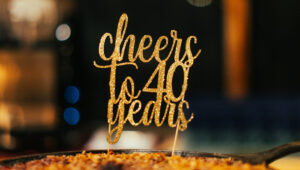I am a product of the slow food movement. Kind of. Maybe Diane just makes me feel more included in this movement. In any case, my brother and I both eat almost solely vegetarian. I make conscious food choices based on where my food comes from and how far it has traveled. I dread the winter not because of the snow, but because my neighborhood farmer’s market shuts down for five months.
It’s not only about where my food comes from either. It truly is, as Diane describes – a social experience. I get excited to go home to my girlfriend and make a meal together entirely from scratch. That means when I say we’re having falafel for dinner, we peel and mash those chickpeas, pick the parsley and tenderly craft and bake that delicious patty. We’ll also make our own hummus, pita chips and tzatziki. Every Saturday morning (well seven out of 12 months in the year), I meet one of my best friends to stroll through the Mount Pleasant farmer’s market and buy the produce I want for the week. We not only talk about what vegetables are in season and what we plan to make for dinner that night, but we share stories and catch up on life, all while, hopefully, soaking up some rays.
When it comes to these social experiences that shape my interactions with food, I will stop picking on my mother and her taste buds’ lack of affection for cauliflower. Dinner was always a family affair and she made this clear throughout my childhood. We consistently sat down together without the television on, no distractions present and talked with one another. I also spent most of my childhood in the great state of Louisiana, where weekends were often filled with crawfish spread on a table covered in newspaper, surrounded by friends sitting for hours on end, each of us licking our fingers until our mouths burned. Food and the act of eating a meal cooked by people you love has and will always be both an emotional and exciting experience to me.
I can’t remember a time when the kitchen wasn’t the focal point of any place in which I lived. Even in my tiny DC apartment complete with a galley-style kitchen, I find it difficult to move people to the living room instead of crowding at the one opening that provides access into the cooking workspace.
What I want to express with this entirely too long of an introduction about my eating habits is that these decisions and choices are part of my every day. This is a lifestyle that I choose to live.
The arts are integrated in my life in the same way. Both of these things are not integrated into the lives of each and every person in the same way, or even at all. I believe this is okay. These are choices that we make about what aspects of life excite and inspire us. But in order to make these choices, we need to have the information in order to do so.
I appreciate the way Diane talks about access to the arts and how this can often create a barrier to engaging with arts organizations. I think about this in comparison to my experience growing up without “access” to different food options. When I talk about access in the home, I should clarify that just because my mother didn’t like fruit doesn’t mean we didn’t have apples and bananas around the house or couldn’t ask to try something. What it did mean was that we were limited in exposure; exposure of variety, recipe and cooking method. It required our own curiosity and discovery. Much of which did not happen until far later in life due to this lack of exposure in the home. And to be fair, it wasn’t only my mother. It was also the educational curriculum and the school system. I have a very vivid memory of my junior high home economics class assignment to make deep fried donuts. Once in the classroom with the rest of the class and then again, at home to show that we could master the concept on our own. So, for a variety of reasons, I left home having never tried an avocado or understanding that you can in fact put squash on a pizza.
Somewhere along the way, these things were introduced to me and my habits and lifestyle have completely changed. Diane eloquently talks about what the arts can learn from the slow food movement and I think we should listen.
When recently attending the 2015 Americans for the Arts Nancy Hanks Lecture as part of Arts Advocacy Day, Norman Lear graced us with an analogy of a peach. Lear described the ecstasy he feels biting into a perfectly ripe peach. You can imagine it now. The juices dripping down your chin and the taste of sweet nectar. I can’t help but dream about the peaches of Fredericksburg, Texas right this moment. Lear continued to say that he feels this same ecstasy watching an orchestra perform or leaving an incredible theatre performance. I think he’s right. I think this kind of craving exists for the arts. All we need is a taste.
As a postscript and as a book and film enthusiast, I must counter Diane’s point that reading a book or seeing a film does not encourage social interaction. We may not talk while we do those things in the moment. But do we talk when we watch a piece of theatre? Not always. This typically follows the performance. In order to create social interactions around these cultural aspects that I love, I of course use food. Monthly meetings with my book club over wine and cheese and gatherings with friends to screen documentaries and films to discuss content over dinner, all prove an incredibly rich social experience to indulge in these art forms. Perhaps this is my own way of initiating a slow arts movement.


